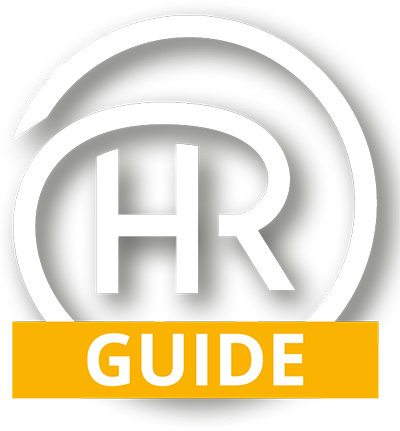Managing Equal Opportunities – A Step-by-Step Guide
Written by Andrew Johnson, Founder and CEO HRGuide - Wed 23rd Oct 2024
Once you have developed your Equal Opportunities Policy it is important that it is executed in all areas of work, including:
- recruiting new staff
- training and promoting existing staff
- equal pay
- religious beliefs and practice
- dress code
- unacceptable behaviour
- the dismissal of staff
- redundancy
- different types of leave for parents
- flexible working
1. Recruitment
When looking to hire new staff, you should advertise in at least 2 different places to reach a wide range of people from different backgrounds. You can also promote your values as an equal opportunities employer and how you welcome applications from:
- anyone who believes they meet the essential requirements of the job
- anyone under-represented in the organisation – this is called positive action
For example, you might say that applications from qualified candidates with disabilities are welcome. If you take positive action, you must be able to prove it's been reasonably thought through and does not discriminate against others.
You could get managers trained on skills that help them including:
- use the job description and person specification to choose the best applicants
- have an inclusive attitude
- avoid making decisions based on what they think or believe about a person because of their protected characteristics (unconscious bias)
2. Training and development
Equality, diversity and inclusion should also have a place in the training, development and promotion of staff. This includes:
- training and development for employees and managers, for example, so staff have access to opportunities without prejudice because of a protected characteristic
- new staff inductions, for example, so everyone gets on board straight away with the equality, diversity and inclusion policy
- performance review processes and promotions, for example, so there are no questions about whether or not an employee fits in because of their protected characteristic
- Training should show why it's important to value everyone's differences and how to do this.
3. Equal pay
You should check regularly that all employees doing equal work have equal:
- pay
- benefits
- terms and conditions in their employment contracts
The equal pay law is aimed at equal pay for men and women doing equal work. But pay discrimination claims could be made for any protected characteristic, for example age, disability, race or religion.
4.Religious beliefs and practice
The law protects from discrimination, harassment and victimisation because of:
- religion
- religious belief
- having less belief than someone else or no belief
You should make sure that all employees are treated fairly, regardless of their beliefs or lack of belief, and address any issues as soon as possible. You should also try to agree to employees' requests, where reasonable, for time off for religious festivals and to pray at work. Refusing a request for religious practice without a good business reason may be discrimination. This could also apply to other things such as dietary requirements.
5. Dress code
You should check your workplace dress code does not discriminate against any protected characteristics.
6. Unacceptable behaviour
Your workplace policies and practices should make clear what counts as unacceptable behaviour at work. You should follow full and fair grievance and disciplinary procedures.
7. Dismissals
If you dismiss someone because of a protected characteristic, it could be discrimination and they could claim unfair dismissal at an employment tribunal. If someone is bullied or harassed but you do nothing to stop it and they leave their job, they could claim constructive dismissal at an employment tribunal.
8. Redundancy
When selecting staff for redundancy, you should be careful to not make decisions affected by unconscious bias and protected characteristics.
9. Parents who are on leave
You should make sure employees do not miss out on job or training opportunities and are informed about any important matters and changes in their workplace. This includes those who are away from work because of:
- antenatal appointments
- pregnancy
- maternity leave
- paternity leave
- adoption leave
- shared parental leave
- caring for children
10. Flexible working
Allowing employees flexible working where possible could avoid the risk of discrimination against an employee because of a protected characteristic.
Example - 3 months before returning from maternity leave, a female employee requests to work fewer hours as she is now the main carer for her children at home. If you refuse her request but do not have a valid business reason, this could be discrimination because of sex. This is because more women than men are the main carers for their children.
11. Communication
Employees are more likely to get onboard with your organisation's purpose and values if they:
- feel valued
- are clear what the organisation's purpose and values are
- understand how they play a part in achieving your organisation's goals
You could help employees feel included in your organisation by:
- talking openly with them
- letting them know how the business is doing
- being clear about any changes, decisions or plans
You could also hold open (or 'town hall') meetings, where employees can meet and ask senior managers questions.
12. Leadership
You and any senior managers should be role models for inclusive behaviour.
It's good practice to:
- encourage everyone to have a more inclusive attitude
- give managers training that helps them see the importance of their role in shaping your workplace culture
- have an equality, diversity and inclusion champion at senior level who can speak up for under-represented groups and flag any issues that need addressing
- look out for signs of discrimination, inequality and exclusion, and address them as soon as possible
It's important to have a well-crafted Equal Opportunities Policy which protects the business from serious or legal issues arising, such as bullying, harassment and discrimination.
Download our more detailed step by step HR How to Guide for more detail on equal opportunities by subscribing to https://www.hrguide.co.uk/subscribe.php
If our step-by-step HR How to Guide doesn’t give you the support you need, simply call us on our HR Helpline for expert advice.

